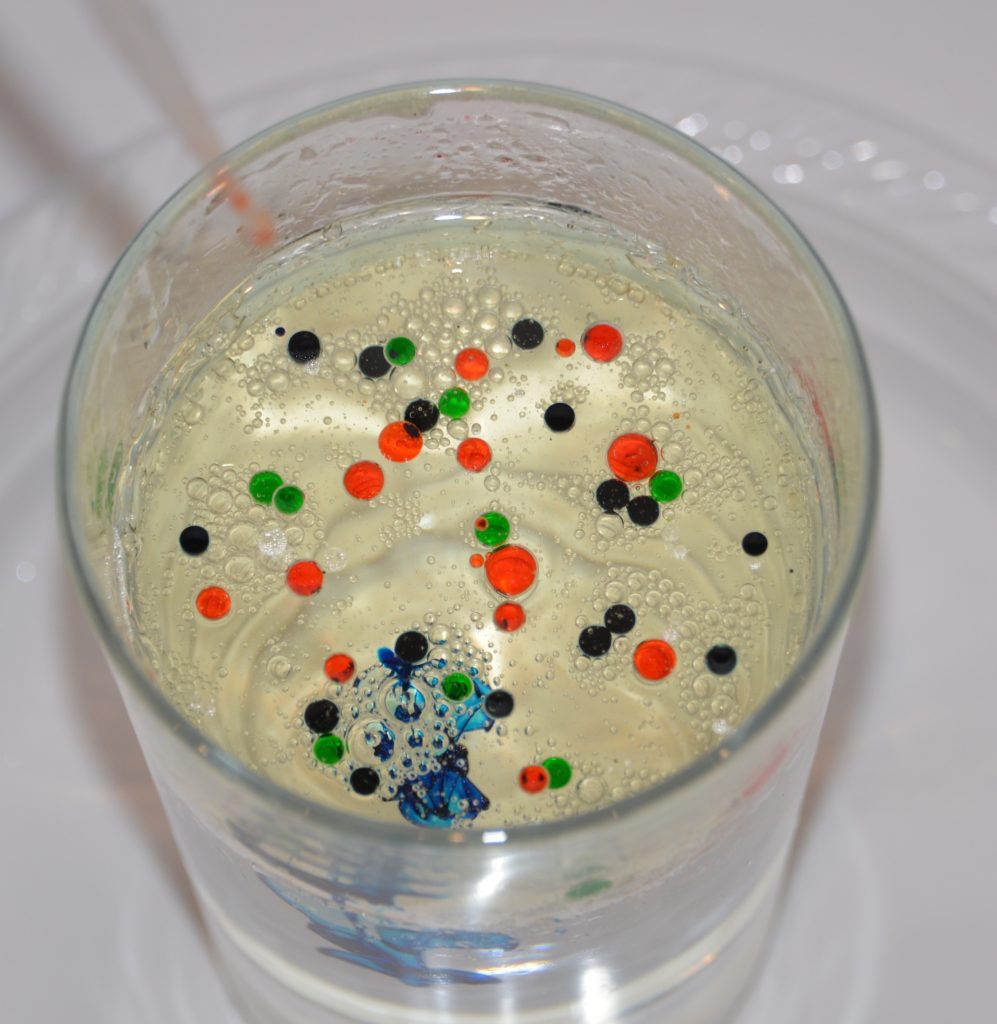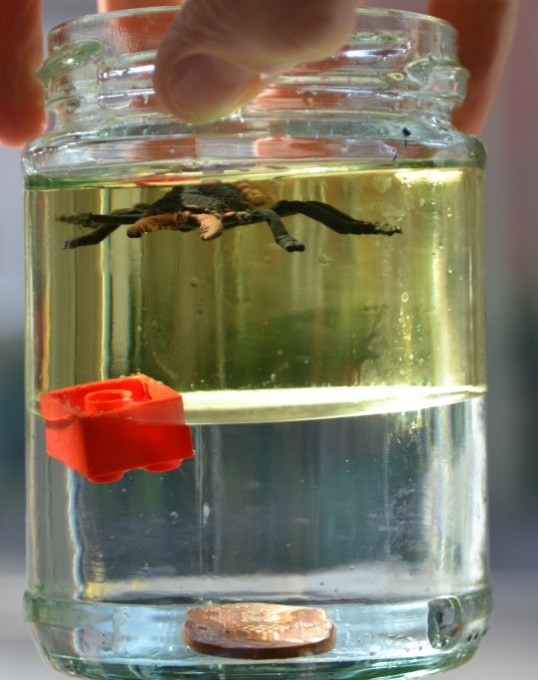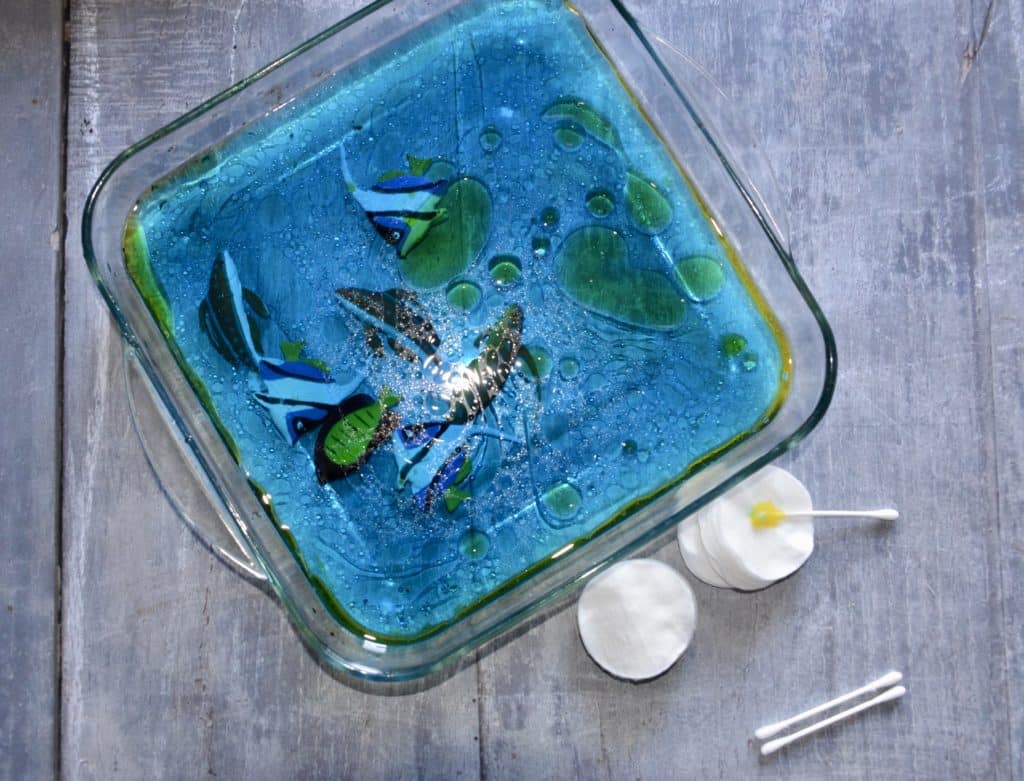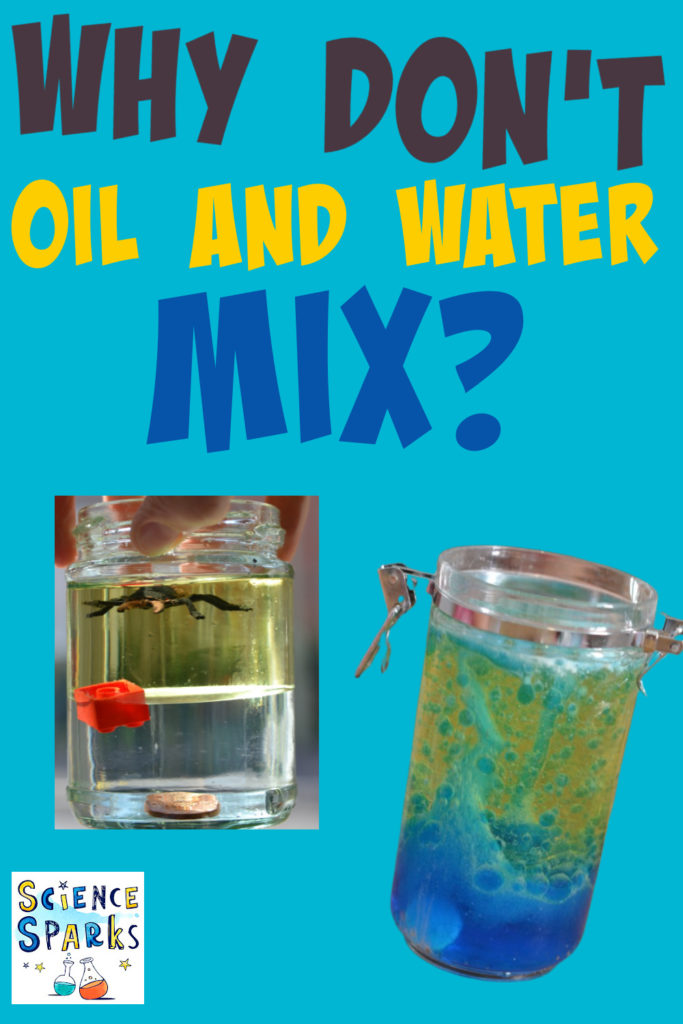Water and oil do not mix. They are said to be immiscible. This is because water is a polar molecule – its structure means that is has a positive charge one end and a negative charge the other end. Water molecules stick together because the positive end of one water molecule is attracted to the negative end of another.
The structure of an oil molecule is non polar. Its charge is evenly balanced rather than having one positive and one negative end.
This means oil molecules are more attracted to other oil molecules than water molecules, and water molecules are more attracted to each other than oil, so the two never mix.
You can see in the image below how food colouring doesn’t mix with oil. The food colouring actually sinks through the oil into the water layer as water is more dense than oil. This is the basis for a firework in a glass experiment.

The two can be forced to mix by adding an emulsifier which creates a mixture of water with oil molecules spread evenly through it or vice versa.
Oil and Water Science Experiments
Use water and oil to demonstrate density. You can make a very simple density jar with just oil and water or use other liquids to make a more complex density column.

Find out what happens if you put a gingerbread man in oil and water.
Try to clean up an oil spill!

Make a lava lamp with oil and water.

Last Updated on November 3, 2021 by Emma Vanstone

Leave a Reply